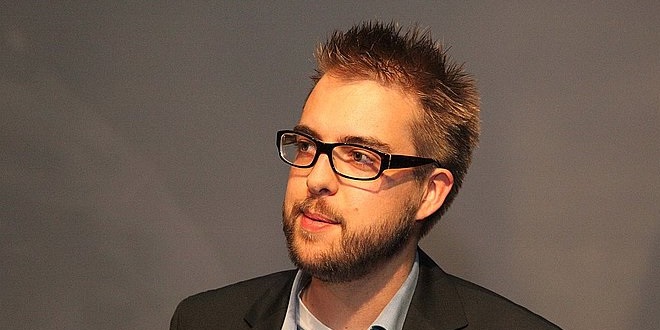
by tomnora | Jul 26, 2017 | startup, startup CEO
(Photo by Wil Stewart on Unsplash)
Im my book HACKING THE CORE, I write about using Creativity and Innovation to help startup founders achieve that elusive goal – sustainable business growth, along with a few other things like profitability, a fun place to work, personal fulfillment.
That’s an oversimplification, but the idea is to expand your horizons, “think different” to enhance your chances for success as well as personal fulfillment along the way.
Innovate. Be creative. Discover something no one else has. Go where they’re not.
The book also talks about Wantrepreneurs and Cantrepreneurs. In my consulting work I can identify these types of people. They’re usually struggling, losing their company, walking backward towards the edge of a cliff, failing daily. Yet they’re unwilling to change their thinking.
Creativity and innovation don’t actually make sense to them in a practical application because it threatens their status quo. Deep down, change is bad to them.
Their brains are wired to do things their way – no matter what. Usually their way is to mimic someone else’s or their own successful tactics from the past. Crazy, right?
Every entrepreneur wants to innovate but some just can’t. Even in the face of doom and bankruptcy they can’t change. Another type of cantrepreneur.
They ask for help but only to help them do things their old way, and not to bring new innovation to the problem.
Why? Because that’s a threat to their self image, their power, their reputation as being the authority. Their position as the boss.
There are other people who are totally open to change, reinvention, pivoting, innovating, threatening their own beliefs, listening to others. These are the real entrepreneurs. They’re happy to be wrong. They have much better odds for success.
Which one are you?

Hacking The Core

by tomnora | Dec 31, 2014 | AdTech, CEO Succession, photography, PHP, Scalability, startup, startup CEO, Tom Nora
Pinterest as we know it could be a thing of the past. Beginning January 1, 2015, Pinterest will start putting ads on its site. Real ads in the form of promoted pins. I have mixed feelings about this – I respect their right to do this and I’m happy for them to be able to get a piece of the enormous revenue stream that Google and Facebook dominate, but it will also take away the purity of Pinterest and lessen the experience a bit.
Overall, I say congratulations, you’ve earned it, Pinterest! They will now move up the food chain significantly as Fortune 500 companies can develop more formal relationships with them and build “serious” ad campaigns. All other ad industry professionals and component niches will also take a big step closer to Pinterest. This is like opening up a whole new giant beautiful piece of the web to advertisers.
But there is a cost to this for users. Pinterest is one of my favorite places to go on the Internet, one of my favorite apps. It’s an oasis in the ad strewn desert of social media. There are many indirect ads there already, especially clothing sold by affiliates, but not very intrusive to the experience.
Pinterest is a constant river of pictures, and mostly very high quality pictures, undistracted by ad text or flashing lights. It’s a respite from the rest of the web, with its rectangular boxes of advertising or the sidebar of Google ads – the high value real estate of the web that is rented to the highest bidder.
As a major fan of photography and imagery I like to go over to Pinterest to get away from all that. It’s almost like a relaxation lounge on the web. I’ve slowly built and curated my collection of pins over the past 3 years, with a bit of an eye towards social validation, but mostly to see cool photos. I’ve been pleasantly surprised thousands of times by images I’ve seen. How many products can claim that?
One of the best parts of Pinterest is that it’s participatory, a gamification of looking at photos (and memes and infographics). As you browse build and organize your collection and it shows running totals of several statistics. And there’s minimal social interaction, almost like a library where people tend to be quiet and leave each other alone. A relaxing experience. I even have a board called zen relaxation that I can go to for quiet inspiration.
Pinterest no doubt developed one of the most fascinating products of the last decade, almost as powerful as Google, facebook, and Twitter. It’s addictive, stimulating and makes you smile. Hopefully that won’t change but it could.
The best part of the product is its design. Pinterest pioneered a new type of web page, now referred by everyone as a “Pinterest style”. It’s hard to remember now, but 3 years ago it was revolutionary. That single innovation was more influential than almost anything prior on the web.
Pinterest will do this with a lot of style – use a native ad approach with the Promoted Pin, but it could change them if they’re not careful. They are playing with the big boys now. Giants corporations will have a more formal dedicated part of their ad budget and marketing team focused on Pinterest, like they do now with Google ads and Facebook. Giant corporations will want to “help” Pinterest figure out how to change. Giant corporations will want to acquire Pinterest. Let’s hope they keep their independence as long as possible.
Billions of dollars will be diverted from other ad channels to Pinterest. It could easily tarnish the brand. The fact that they have waited this long to monetize in this way and have built such great brand equity is quite encouraging.
It will also be a great opportunity for advertisers of all sizes, even the little guys. Buying real estate on Pinterest? Awesome!
No matter what happens, I’ll always be a big Pinterest supporter (is there a name for that? Pinterevist?) I hope they don’t hire a thousand lawyers or get acquired, but I trust them to handle this change with the same style they apply to everything.
@tomnora

by tomnora | Dec 19, 2014 | Business Development, early stage, founder, interviews, Launch, Revenue Growth, Scalability, startup, startup CEO, Tom Nora
I’ve been spending a lot of time in the WordPress as a development platform world lately, kind of a new thing for me.
I’m finding many unexpected business advantages in this world for a group of websites I am building to bootstrap a few “baby startups”.
What this has done for me is vastly increase my interest in tactical data-driven marketing on the web –– growth hacking, content management, agile iterative web development and marketing, and yes, even SEO.
The ecosystem of WordPress is actually fascinating and lots of fun, full of solo-prenuers, bootstrapers, hackers, marketers and doers. It’s a somewhat different world than the VC funded startup world that is my day job.
The link below is one of the best interviews I’ve seen, from Collis Ta’eed, a very humble and honest guy who started Envato, a marketplace for web dev themes and many other creative resources.
In a very short time he covers to first 6 months of his company, unafraid to discuss failures, missteps and instances of pure luck. This is the opposite of many startup interviews where the founder claims brilliance and a smooth path and takes credit for everything.
Very inspiring, check it out…
http://wptavern.com/ceo-and-envato-co-founder-collis-taeed-on-the-first-6-months-of-envato
by tomnora | Nov 3, 2014 | Drupal, Jobs, startup
Here’s the first part of his note and his bio:
Tom, I need a job. My background is corporate finance and I’ve worked for the best electronic parts wholesale, a top three cable company, and the #1 online bank (PayPal).
And my response:
Eric, I see a lot of people going through this, myself included. Times are worse than I’ve ever seen if you’re not already in a great position. The idea of j-o-b has become harder to get, you have to think in terms of your own brand instead. I’m actually writing a book about this right right now.
It looks like you have lots of energy, and you’re reaching out, you need to channel it into $$$. Also, Avnet is a great background to have.
I usually see everything as a startup, so you look like a finance startup to me. I’ve spent a lot of time recently in the world of e-commerce, it’s an mazing market growing quickly. I’d focus on that if I were you.
Here are some thoughts:
– Are you currently working at PayPal? You could be a paypal consultant and have a pretty strong business.
– E-commerce technologies are very hot right now
– check out commerceguys.com (Drupal)
– woocommerce (WordPress).
Within those companies or similar have many job openings. Or, expertise here can get you some type of work.
– Keep networking and stay positive, negative attitude will scare people off.
– Start a blog about your experience and about online finance. That will help.
– give before you get. Find ways to help others before approaching them asking for something.
I could list plenty more, but that would probably just frustrate you. None of the above is a job, they’re all just ways to hustle to try to get a job.
Let me know how it goes.
TN
I could rubber stamp this answer to many people I hear from ,but usually I don’t even answer. In looking for a higher leverage way to solve this, I’m using my channels to try to broadcast this topic and help many at once.
Job boards are broken, resume robots are broken, so real humans need to get back into the process. If you want to be involved contact me; otherwise, stay tuned here for more. TN @tomnora

by tomnora | Oct 26, 2014 | Angel Investor, early stage, founder, Hawaii, Revenue Growth, Scalability, startup, startup CEO, Tom Nora, venture
How is it that so many people associated with startups reap the financial benefits, yet others just as close get no financial upside This is a source of frustration among many people in the startup sphere. Imagine if you’re in Silicon Valley right now with no equity in a tech startup, but associated with several people getting six figure “bonuses” because they somehow wound up with some stock in one.
The free parties (or not free) and swag and great stories and boat rides in the bay are nice. Sometimes you’ll even score an iPad or Apple TV, but it’s not the same as being one of the insiders.
Often as startups grow and maneuver their way through the jungle of success or failure, they have a lot of help from those around them.
Often many these people don’t have any equity or upside from their advise or moral support or money lending, or even the spare couch they let you sleep on when you were in their town.
If the startup actually makes it to an IPO, there is actually something you can do.
It’s called the “Greenshoe”. You have to be very careful about this, you can’t imply or promise anything in advance, and it only works when the company goes public, but the Greenshoe is an amazing award for those involved that don’t have equity.
The Greenshoe is an over-allotment of stock options, up to 15% of the total offering at time of IPO. You can offer these options to virtually anyone, friends, family, people who helped your company. Since they’re options, acquirers only exercise if the stock goes up, and have no downside risk or capital outlay.
Upon the IPO event, the option owner can gain the upside if the stock goes up over the initial offering price and essentially collect that difference.
I’ve used it a few times when I was lucky enough to be able to offer it to friends and family. Strangely enough, some people have declined, because they’re not sure it’s legal; they’ve never heard of it. Others have bought themselves a new Lexus with it.
Here’s more info on wikipedia:
Greenshoe
The Greenshoe should provide motivation for all of us in the startup world to try to continuously build our company steadily, continuously and profitably and to know that you can make many peoples lives a little bit better by sharing the wealth. The rewards are pretty amazing.
Contact me at
#Web #Development #Digital #Strategy #Art| tomnora.com

by tomnora | Aug 26, 2014 | Angel Investor, Drupal, founder, PHP, Revenue Growth, SaaS, Scalability, startup, startup CEO, venture
As further market proof of the power of Drupal in the enterprise, Acquia has received about $100 million in funding in the past 3 months, which puts its valuation at over $1 billion.
http://j.mp/nora-acquia
There’s a lot of buzz about the Amazon acquisition of TWITCH this week. As a personal friend of the original investor, I’m very happy for this transaction – after 7 years of work, repositioning, and sticking to it their vision has paid off. But that’s a different article…
Less prominent in the news, but possibly more important, is Amazon’s investment in ACQUIA. Acquia, Inc. is the for-profit company founded by Dries Buytaert, the inventor of Drupal, to support his open source project. Drupal was launched in 2001, and Acquia started in 2007. When Open Source software projects are launched, the progenitors often start a for-profit sister company to garner some income from training, support and consulting. Because they are open source. the original products can’t generate revenue, so when these OS projects occassionally blow up into phenomenons like Drupal and WordPress have over the past few years, it’s gratifying but also quite frustrating to watch others derive so much value from your baby while you toil away to lead its growth with no financial return. Plus, there are tons of expenses like servers, bandwidth, office space, travel and the time of many professionals.
Red Hat was one of the first of these types of companies bridging open source with big finance, leveraging Linux support into a profitable business, also leveraging the enterprise. They kind of invented this business model. Sun Microsystems and others almost made it happen, but they were only semi-free. Google has optimized this open source to freemium model in almost all of its products.
But Drupal has succeeded way beyond it’s original expectations. It was originally started as a college dorm project, where many of the best products on the web seem to hatch. It gained recognition during the 2004 presidential campaign when Howard Dean’s IT director decided to use it as a platform for community and campaigning. After that it quickly gained credibility and spread throughout government, and corporate America.
Drupal is now driving some of the largest and most critical websites in the world, including The White House, The Oscars, Twitter, Mercedes Benz, Warner Music Group, The Louvre Museum, The City of Los Angeles and Stanford University. Over its 13 year life the web has vastly changed from primarily static pages to dynamic database driven automated (“rendered”) web page serving, which Drupal excels at. The average website size has also greatly increased, aided by automated rendering systems like Drupal and others. The term Content Management System has become mainstream in everything from the Fortune 500 to small businesses.
Some of Drupal’s success has come from luck, but most of it has been because of strategy and excellent timing. Dries has carefully pushed the technology not to the bleeding edge, but towards the modern edge where enterprises are comfortable. He and his team have avoided many temptations to try new fads, make big changes and try to grow faster. Currently they face enormous pressure to innovate faster, and are responding with Drupal 8, which will incorporate many new modern web architectures previously not part of the Drupal platform.
Acquia has been critical in supporting, guiding, enhancing and positioning Drupal for the past 7 years. It was a startup that launched with funding from day one and has never looked back.
Amazon’s motivation in buying into Acquia is a bit more self serving. Acuia provides premium, high security, supported hosting to it’s customers, which all runs on top of Amazon AWS. Amazon can see that some of AWS most robust and challenging work comes from Acquia with Drupal. For example, Acquia runs its Drupal infrastructure on more than 8,000 AWS instances and serves more than 27 billion hits a month (or 333TB of bandwidth). Amazon has a strategic value beyond many other companies or VCs in their investment.
What will come next? Will Amazon try to acquire all of Acquia before the inevitable IPO? I think we can bet on that.
This is a very contemplative time for Buytaert – he has fierily protected Drupal’s independence and strategic positioning, taking risks but protecting his large customers from drama, can he keep Amazon and Bezos at bay? I have no doubt he will, for he is a true “Startup CEO”, even though his title is CTO at Acquia.
@tomnora
more info on the funding round from @thewhir http://j.mp/nora-acquia





